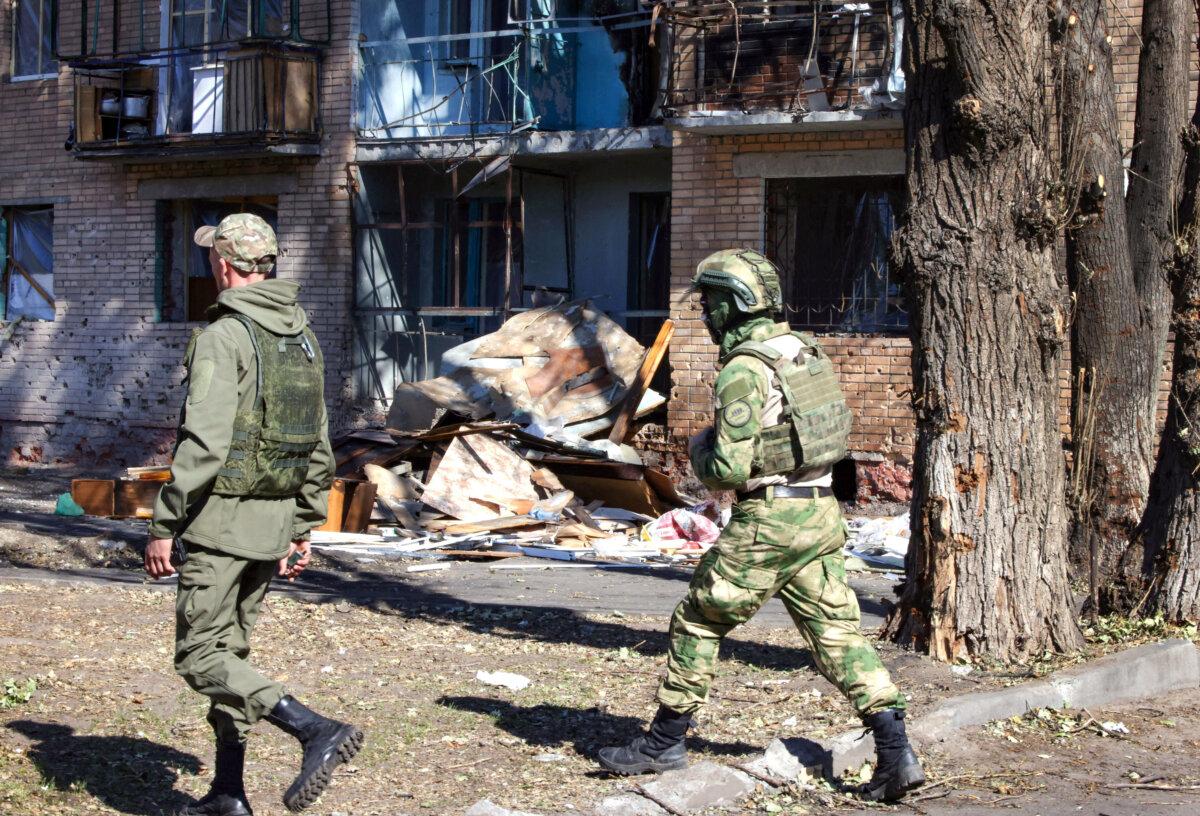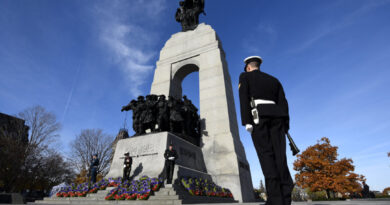Kyiv’s Ukrainian Forces Face Challenges in Holding Position in Russian Border Region
Kyiv plans to leverage captured Russian territory as a bargaining tool in future cease-fire negotiations with Moscow.
Struggling Ukrainian forces are working to maintain control over territory they seized in Russia’s Kursk region this summer, as per military officials in Kyiv.
Gen. Oleksandr Syrskyi, the commander of the Ukrainian military, shared on the Telegram messaging app that Russian forces in Kursk are trying to push back Ukrainian troops and make advances into the controlled territory.
Syrskyi reportedly made these comments during a surprise visit to the front line in Kursk on Nov. 11.
He also mentioned that the offensive in Kursk has successfully diverted elite Russian units from the Donbas region, which includes Donetsk and Luhansk, where Russian forces have recently made significant progress.
“Tens of thousands of enemies from the best Russian shock units would have stormed our positions in the Pokrovsk, Kurakhove, or Toretsk directions [in Donbas], which would have significantly worsened the situation at the [eastern] front,” Syrskyi stated.
Russia allegedly deployed 11,000 North Korean troops to Kursk, where they are said to have participated in the fighting alongside Russian forces.
There has been no confirmation or denial from Moscow regarding the presence of North Korean troops in the volatile border area.
Russia’s defense ministry stated this week that its aircraft were eliminating Ukrainian troops and equipment still stationed in Kursk.
The day after, a Russian military unit commander fighting in Kursk told TASS that Russian forces had secured a vital supply route in the border area.
“But … their logistics have been almost completely destroyed,” he added, asserting that all routes into Plekhovo had been “completely secured.”
Plekhovo has reportedly been a location used by Ukraine to supply its forces in the nearby town of Sudzha, a crucial energy transit point, parts of which have been under Ukrainian control since August.
The Epoch Times was unable to independently verify claims made by either side.

Local volunteers walk past a building damaged by Ukrainian strikes in Kursk, Russia, on Aug. 16, 2024. Tatyana Makeyeva/AFP via Getty Images
Kyiv: No Concessions
On Aug. 6, thousands of Ukrainian troops poured into Russia’s Kursk region—backed by tanks, armored vehicles, and artillery—in a move that took Moscow by surprise.
Kursk, about 18,500 square miles in size, shares a border of roughly 150 miles with Ukraine’s northeastern Sumy region.
During the initial stages of Kyiv’s offensive, Ukrainian forces managed to gain effective control over extensive areas of Russian territory near the border.
Since then, Moscow has sent reinforcements to the region, while Russian aircraft and artillery continue to target Ukrainian troop concentrations in the area.
Shortly after the offensive began, Ukrainian President Volodymyr Zelenskyy stated that the operation aimed to capture—and retain—Russian territory to be used in potential future cease-fire discussions with Moscow.
In 2022, Russia invaded—and effectively annexed—large parts of eastern and southeastern Ukraine, considering them Russian territory.
As outlined by Russian President Vladimir Putin, Moscow’s main conditions for ending the conflict involve the withdrawal of Ukrainian forces from all territories claimed by Russia and guarantees that Ukraine will not join NATO.
Kyiv rejects these terms and is committed to fighting against the superior Russian forces until all lost territories are reclaimed.
President-elect Donald Trump, during his 2024 presidential campaign, vowed to end the war upon assuming office in January 2025.
While Trump’s approach remains unclear, Zelenskyy recently stated that making concessions to Russia is “unacceptable for Ukraine and suicidal for Europe.”
Reuters contributed to this report.





